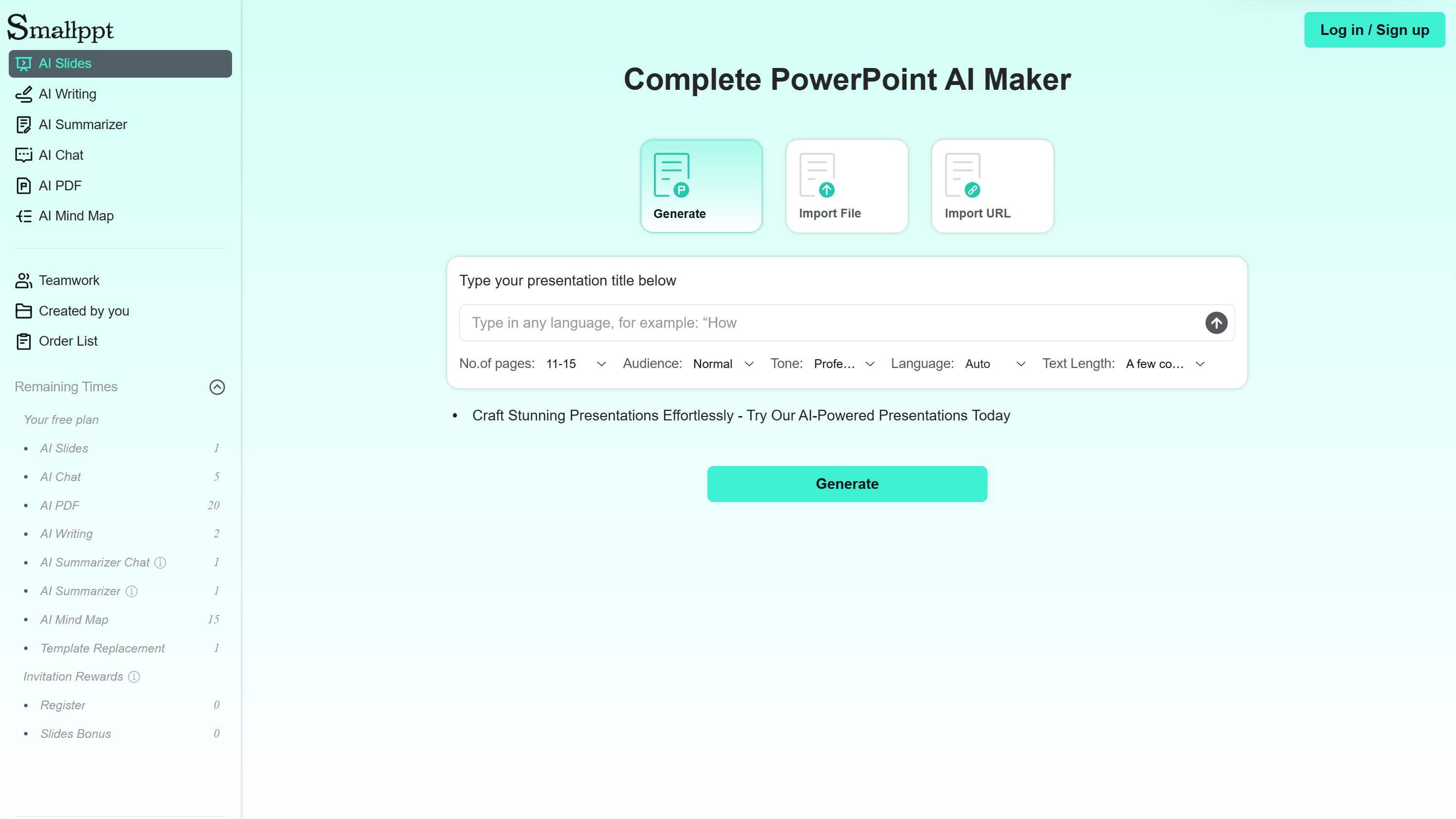
Today, giving presentations is incredibly common. Whether it's a class assignment, a marketing pitch, a business report, or an industry talk, a great opening can instantly grab your audience's attention, spark their interest, and set the stage for a successful presentation.
In this blog post, we'll explore why a strong presentation opening matters and share some tips and techniques to help you start a presentation.
Why a Powerful Opening Matters
Grabs Attention
Audience attention is highest at the start. A compelling opening instantly hooks their curiosity, paving the way for your message to land smoothly.
Sets Clear Expectations
Briefly state your presentation's goal and outline answers to the audience's silent questions: "Why should I listen?" and "What's in it for me?" This also makes it easier for them to follow your flow and understand your points.
Boosts Your Confidence
A good start helps you, the presenter, settle into your groove quickly. Seeing positive cues from the audience, like a nod or a smile, builds your confidence right away.
Builds Connection
The opening helps you establish an initial rapport with your listeners. Show your passion, authenticity, and respect for their time. This helps bridge the gap, making the audience feel more receptive and connected to you from the beginning.

Tips and Techniques for Starting a Presentation
1. Start with Gratitude (Optional)
You can open by thanking your audience for being there, whether it’s for listening to your presentation or simply making time for it. If your talk has sponsors, remember to thank them too.
But this isn't always required; you should consider your speaking context.
Example Use Case: If you're speaking at a formal event or have been invited specifically (meaning the audience is the organizer or an invited group), starting with thanks can show your professionalism, courtesy, and humility.
2. Introduce Yourself
At the beginning, briefly introduce yourself. Share your name and your background. This helps the audience understand who you are and starts building trust naturally.
3. Define Your Speech Content
Clearly tell your audience what the core topic of your speech is and which areas it will cover. Consider what key information or insights you want them to gain from your presentation. This helps avoid information overload and allows the audience to quickly grasp the essentials.
4. Open with a Story
Start with a short story relevant to your topic. It could be a personal experience or something you learned elsewhere. This draws listeners in and creates a stronger connection.
People generally remember stories much better than facts alone. If they remember your story, they can later recall parts of your presentation too, making your message more impactful and memorable.
After your story, smoothly transition into your presentation outline to show what the rest of your talk will cover.
5. Begin with a Question
Toss out a thought-provoking question to your audience. This gets them thinking, making them active participants as they follow you into your presentation.
You could immediately answer the question yourself, but then guide them through why that's the answer.
You could also pose the question, give listeners a moment to reflect, then invite them to briefly share thoughts with someone near them, or ask a few to volunteer their perspectives. This interaction makes the audience feel more invested in your presentation right from the start.
6. Use a Quote or Saying
well-chosen quote lends credibility and quickly adds weight to your topic. Make sure it aligns perfectly with your core message – avoid a mismatch just to sound profound.
Example: Albert Einstein once said, "Imagination is more important than knowledge" (roughly meaning creativity matters more than existing facts). That quote highlights the core of our discussion today: how innovative thinking can help overcome industry roadblocks.
7. Leverage the Power of Humor
Appropriate humor can lower the audience's psychological defenses and create a relaxed atmosphere, but avoid vulgar or sensitive content.
The humorous content should be relevant to your speech topic. This both introduces the theme and allows the audience to relax amidst laughter or in a light-hearted mood.
However, this method isn’t suitable for all speaking occasions, so assess whether humor fits the context before using it to break the ice.
8. Directly Address the Pain Point
Precisely pinpointing the real challenges the audience faces, which instantly builds a sense of "you understand me" resonance. This requires in-depth research into the audience group to understand their most urgent struggles in work, life, and cognition.
Only by identifying genuine and widespread problems can you create a strong "that hits home" reaction.
Anchoring the discussion to real-world issues can make the audience realize that the speech content directly impacts them, motivating them to invest greater attention.
9. Utilize Visual Tools
Open your speech with slides, videos, audio clips, or images. These tools can grab the audience’s attention instantly, create an immersive scenario, and overcome the abstraction of verbal expression alone.
This significantly enhances delivery effectiveness and communication efficiency.
AI Powers Your Presentation Creation
Are you still struggling to create presentations? AI can make the process easy and efficient. If you're looking for a relevant tool, Smallppt is a great option.
Simply enter keywords or phrases, or upload a related text document, and AI Slides will quickly organize key content, create a text outline, and generate a creative presentation based on your preferences, turning presentation creation into an easy and efficient breeze.
You’ve also got access to a vast collection of stylish templates to choose from and customize. Even if you prefer designing slides yourself, it can provide endless inspiration.
If you already have a speech draft, use AI Chat to discuss how to design a powerful opening that instantly grabs your audience’s attention and leaves a strong first impression.

Ending Notes
A compelling opening is crucial for engaging your audience and setting the tone. We’ve compiled 9 tips for starting a strong presentation opening. Choose the approach that fits your occasion and needs, and flexibly mix these techniques to create an engaging and impactful beginning.


